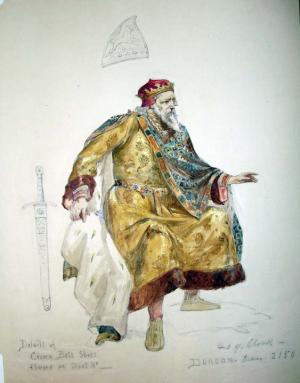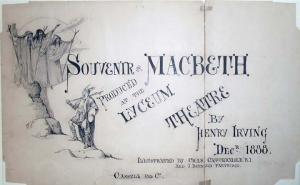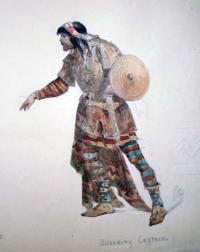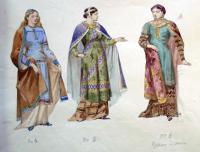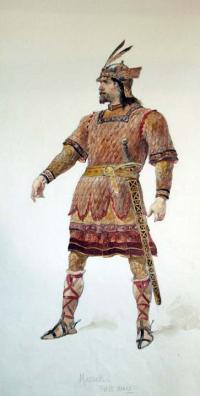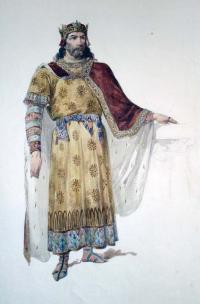When Sir Henry Irving (1838-1905) first played the title role in Shakespeare’s Macbeth in 1875, The Times noted that it was to Irving’s advantage that he was “appearing at a time when there is no important rival to suggest comparisons.” The unnamed reviewer goes on to characterize the performance as “a conception of the actor’s own fancy, which can be supported only by a corruption and misinterpretation of the plain meaning of the dramatist. From first to last Irving’s Macbeth is a poor, frightened, whimpering cur, without even a passing touch of any kind of manliness, except, perhaps, one flash in his last moments.” The production closed in less than three months.
In 1878, Irving purchased the Lyceum Theatre and in 1888, along with his lover Ellen Terry (1847-1928), revived his Macbeth in a freshly designed and directed production, with music by Arthur Sullivan. They played to standing room crowds for over six months. Costumes and props were designed by Charles Cattermole (not to be mistaken for George Cattermole, 1800-1868, who illustrated books by Charles Dickens and Sir Walter Scott).
Cattermole worked several times for Irving, creating everyone’s costumes except Terry’s, who used her own designer/advisor Alice Comyns-Carr along with the dressmaker Mrs. Nettleship. Unfortunately for Cattermole, when John Singer Sargent (1856-1925) chose to immortalize Terry in her Lady Macbeth costume, the other designs by Cattermole were all but forgotten.
